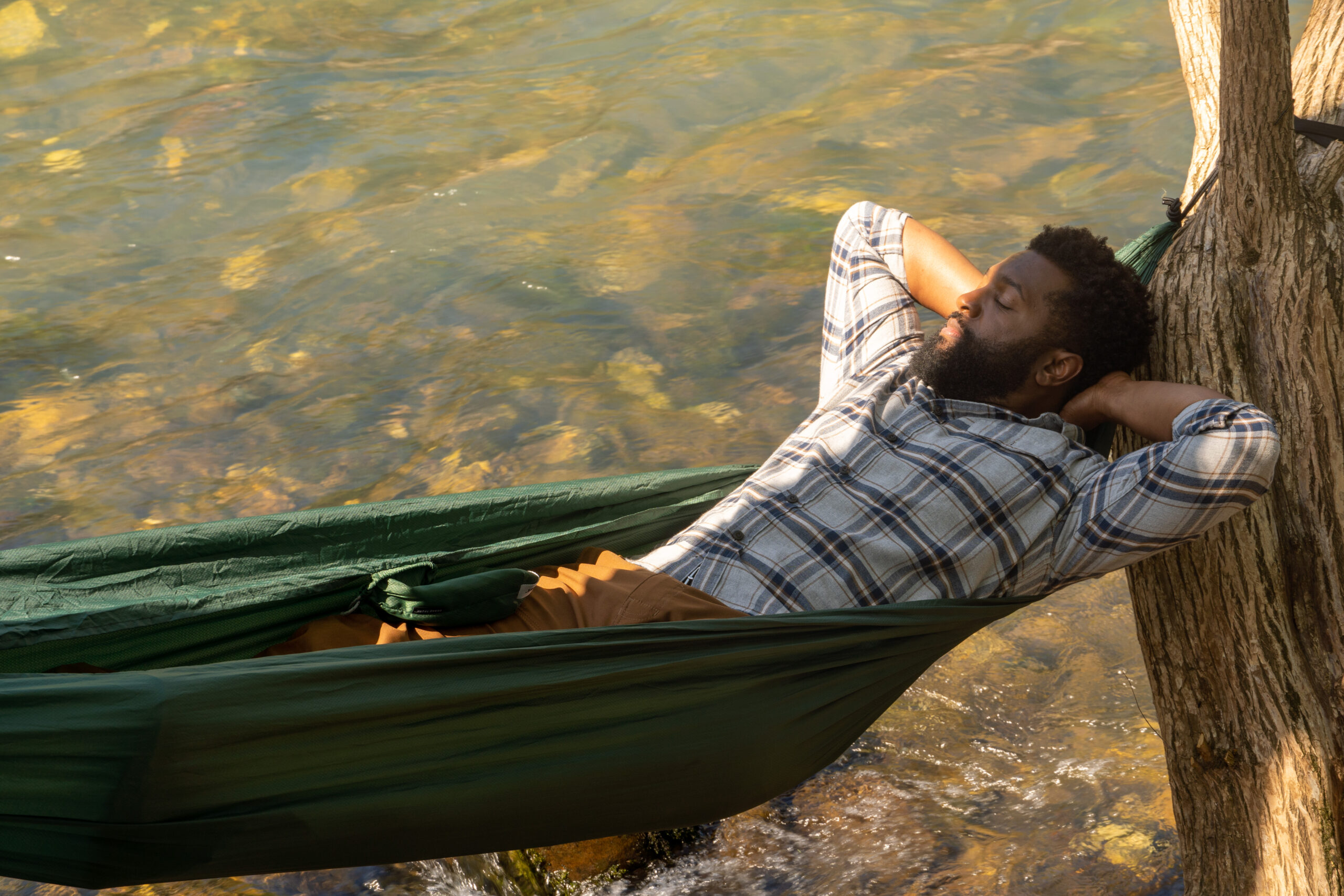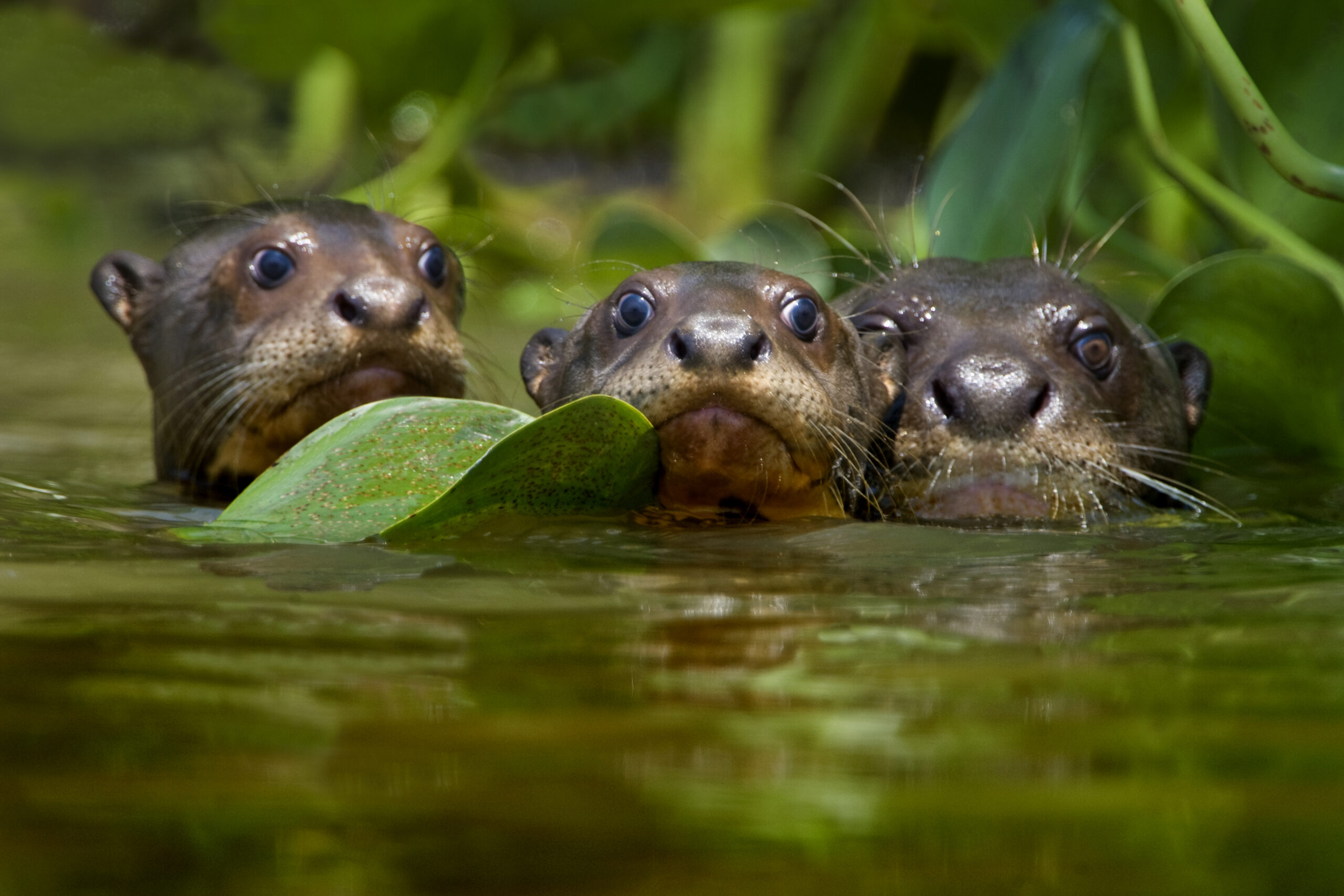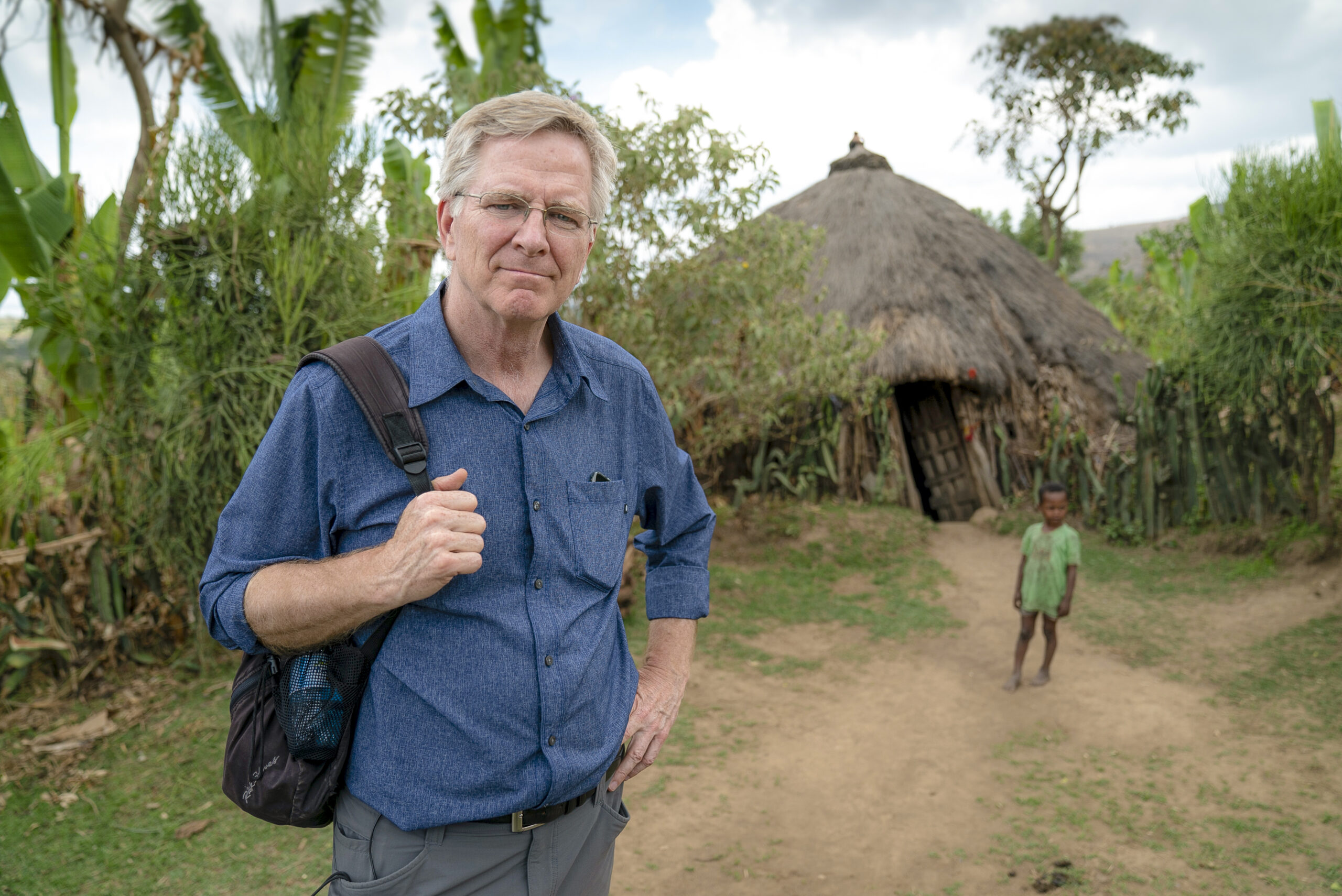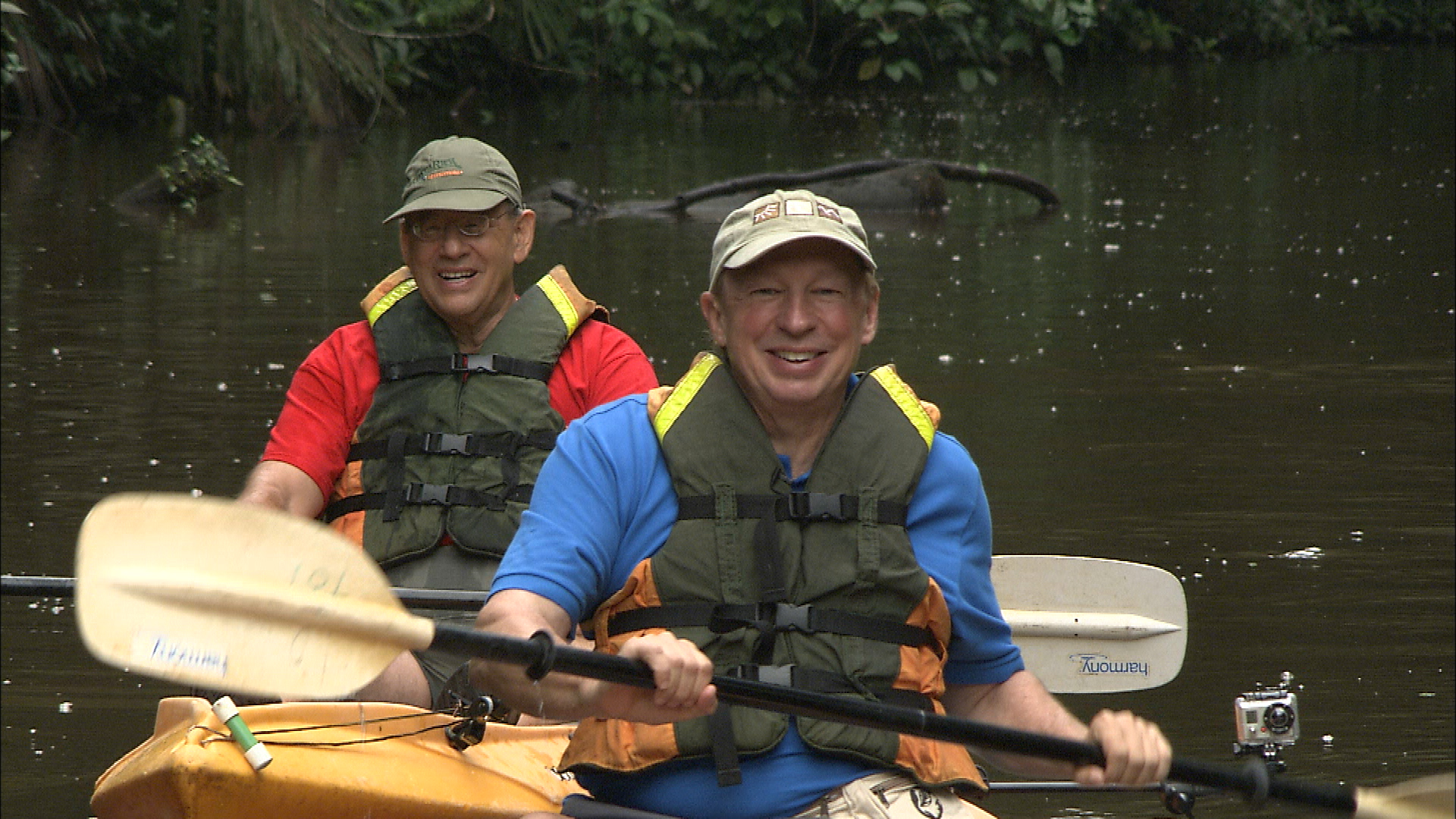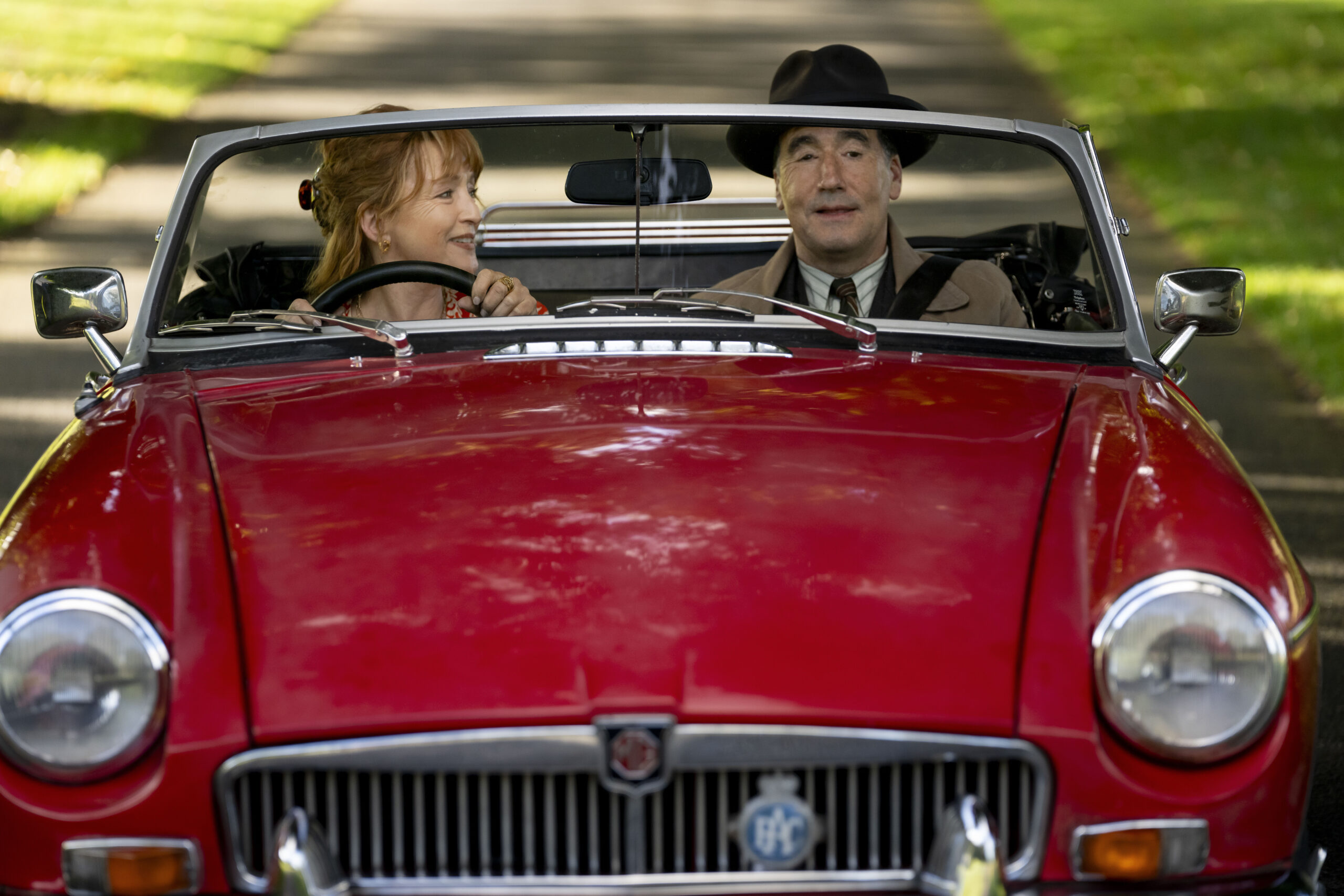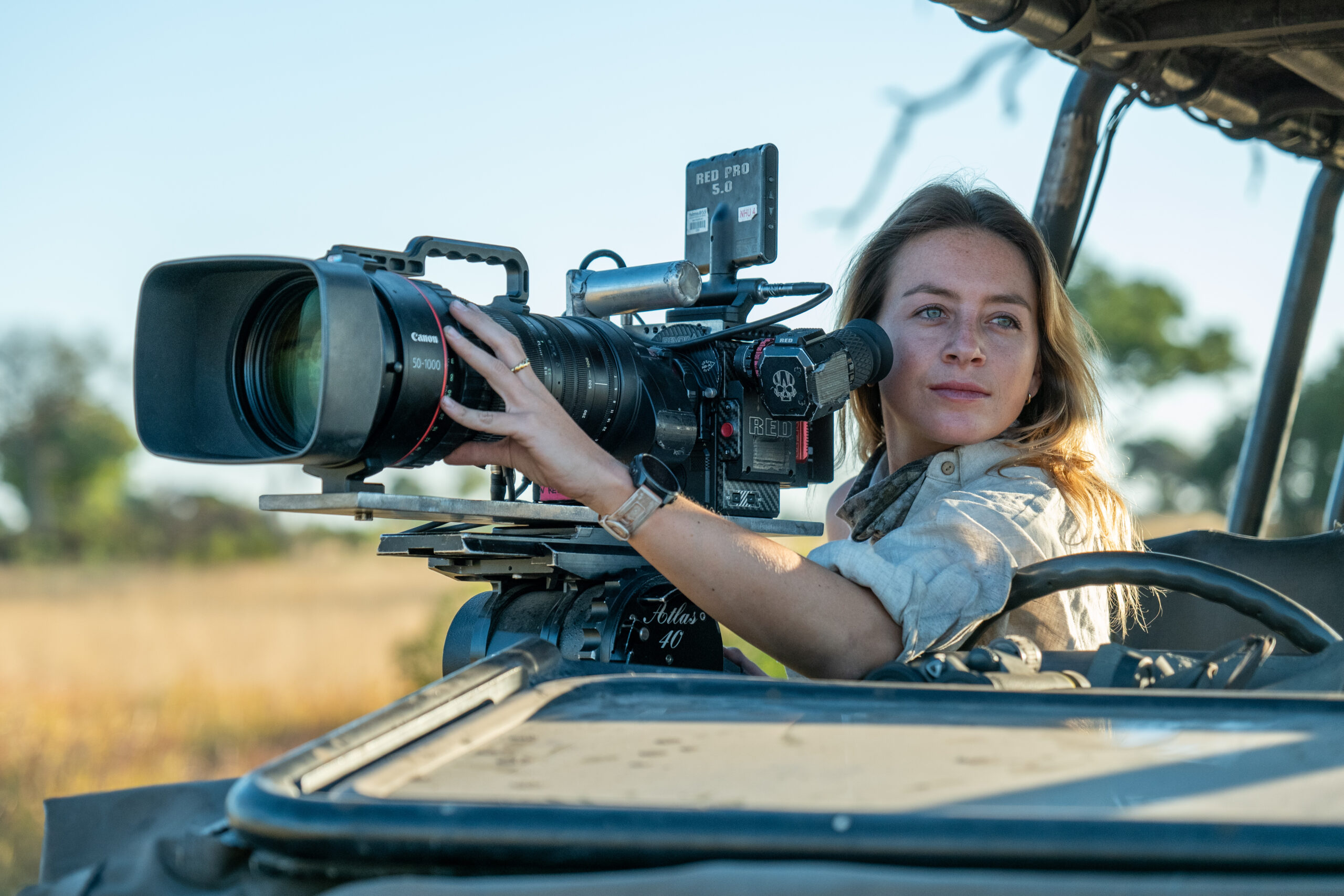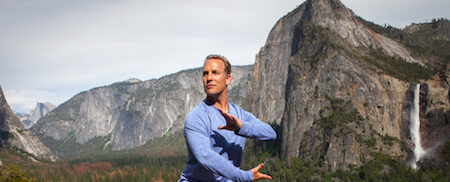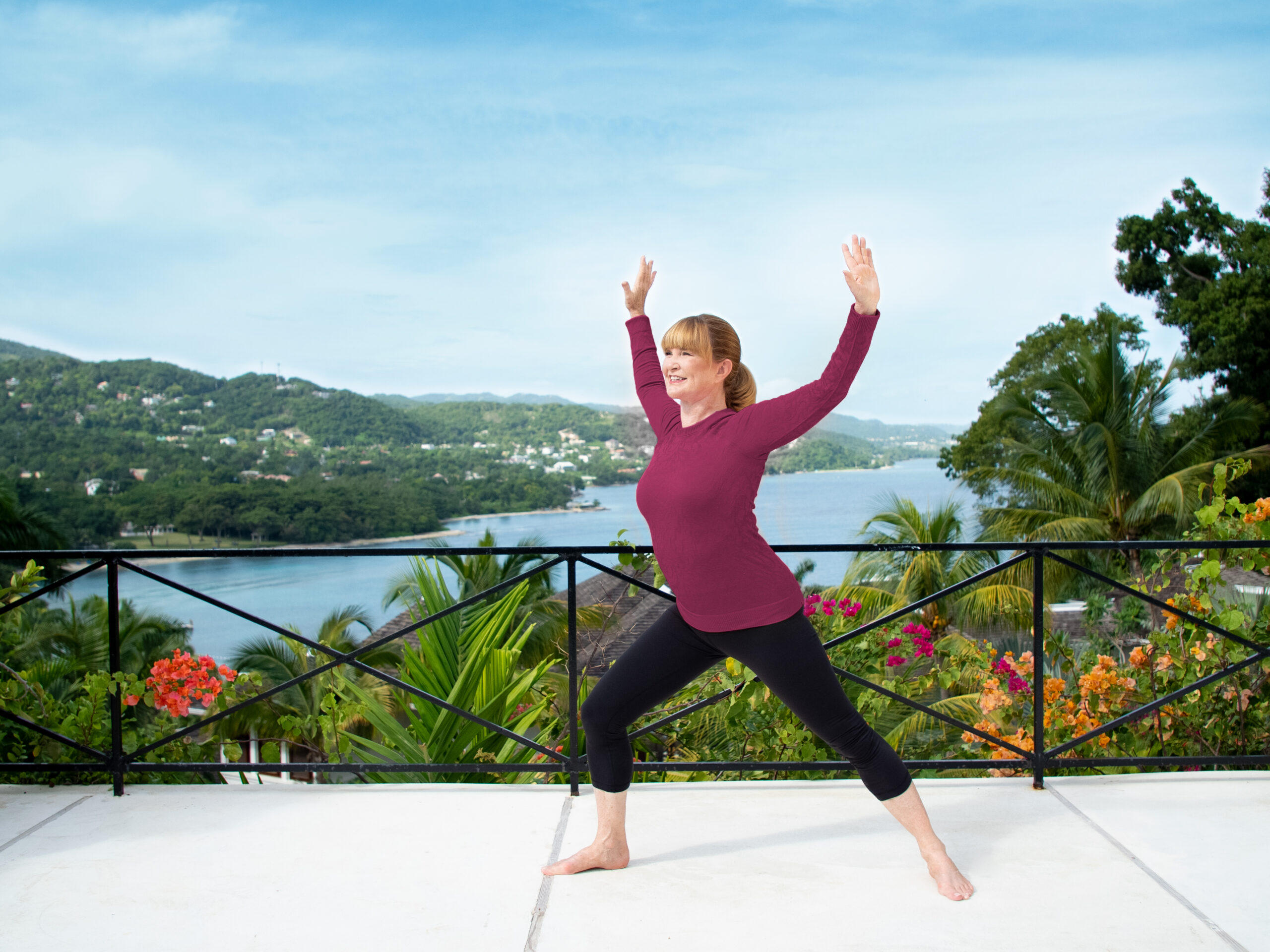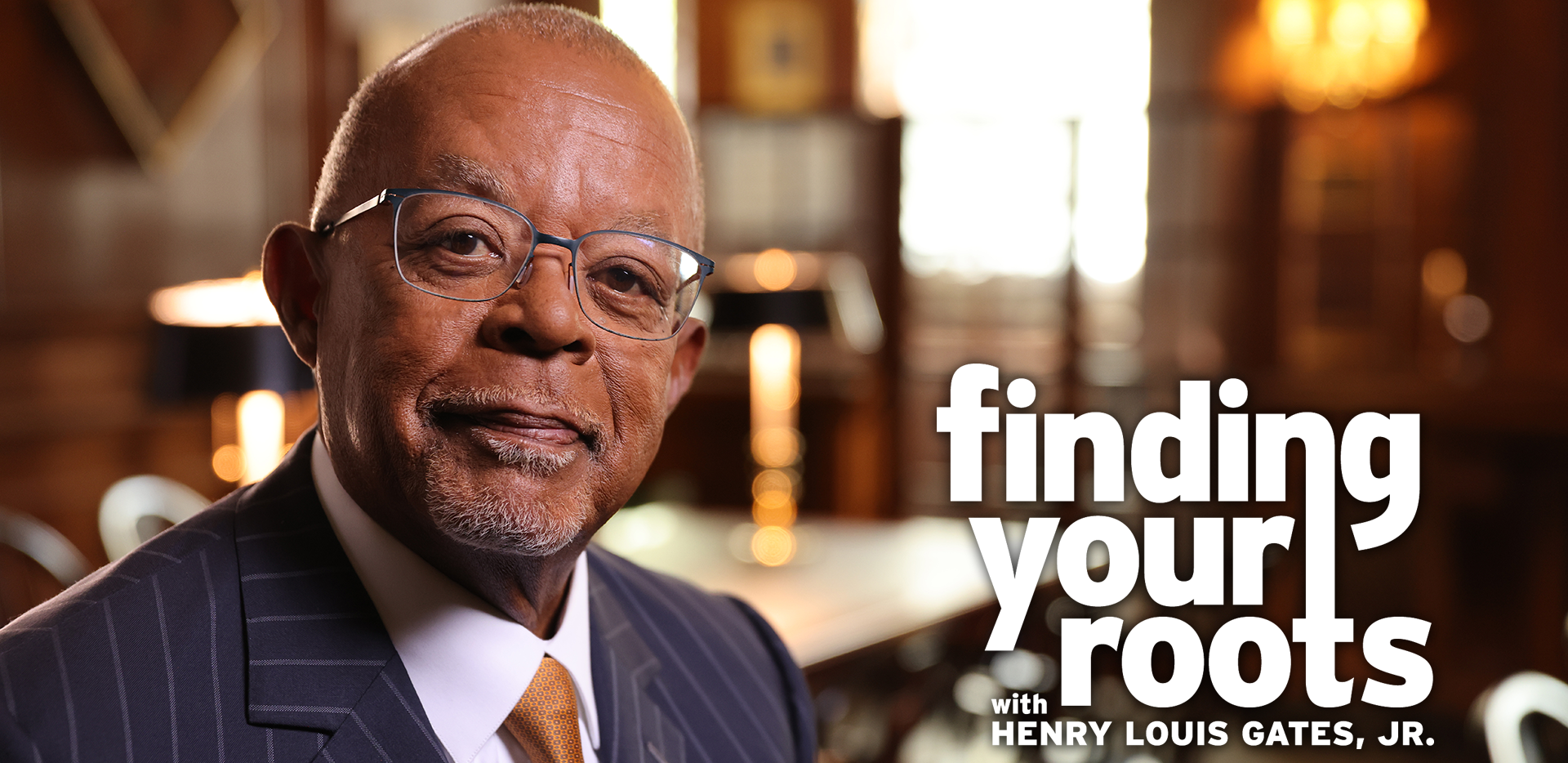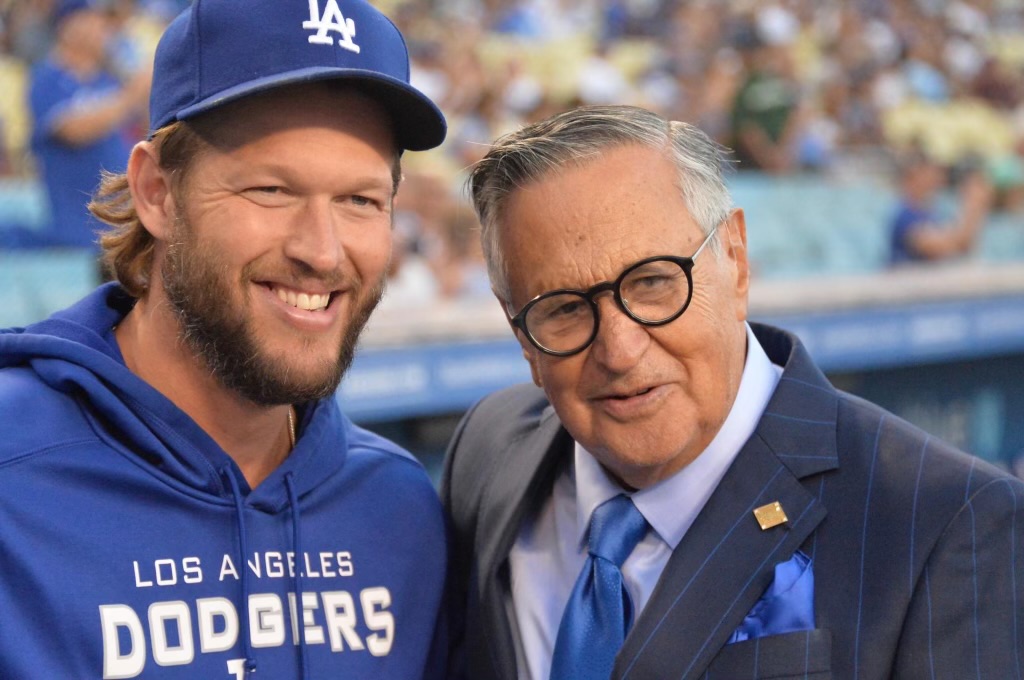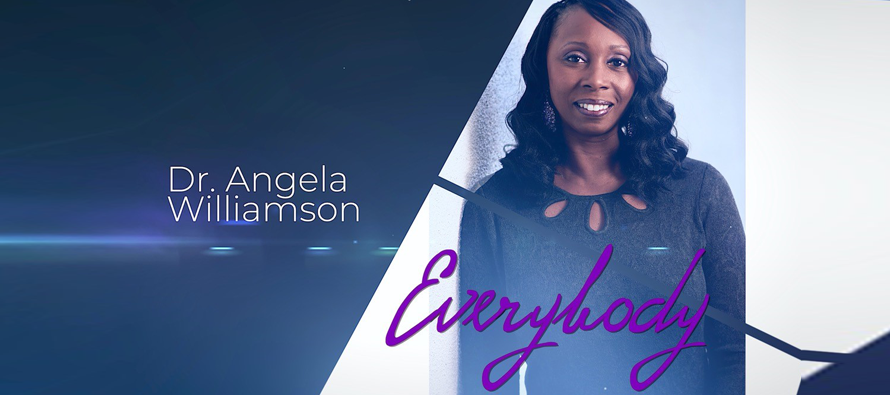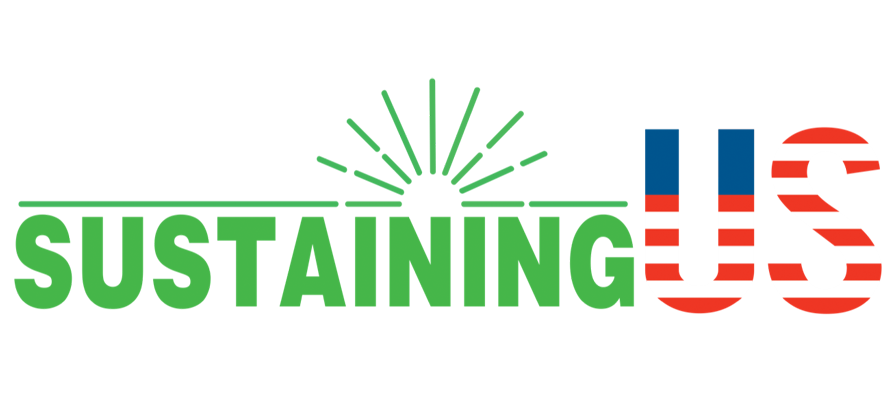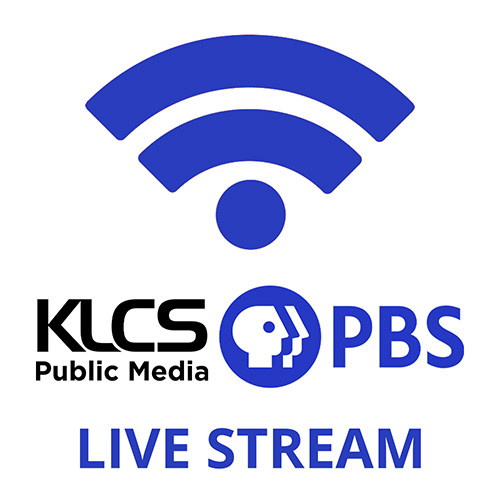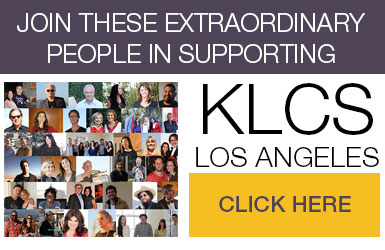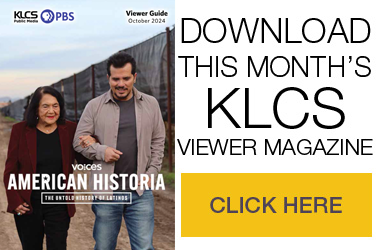Discover the captivating natural world alongside Baratunde Thurston in “America Outdoors.” From braving icy waters to mountain biking on indigenous lands, this series captures the diverse ways Americans connect with the great outdoors. Dive into respectful turkey hunts, urban fishing adventures in the L.A. River, and thrilling surf sessions, showcasing the unity of all people’s in nature’s embrace. Hear firsthand from Baratunde as he shares his transformative experience on “Hope in the Water” and reveals his favorite local nature spots in Los Angeles.
Baratunde, before we talk about your show, you’re in a new show on PBS, Hope in the Water, how did that come about?
I was meeting with Andrew on another matter, him and his team and they were like, “Hey, do you want to be a part of this thing we’re doing?” And I was like, “Yeah, yeah, I do!” And part of it was, when the deal was sealed, I went to their special event during Climate Week in New York last September, and I met Jennifer Bushman in person, she is a powerful force of nature who’s helping run the Fed by Blue nonprofit, which has wrapped around a whole impact campaign around the series and just making the stories accessible in a literal sense. Like you can make a show about how we feed ourselves, and that’s cool, and you hope people watch that and they feed themselves better. Or you can do what Jen is doing, which is helping make a show about how we feed ourselves, and then working with grocers to change what they stock, and then putting together cookbooks that are aligned with the show, and then launching an app so people know where they can buy their food, and then working with suppliers. So it’s this really robust program around making the story real that was a huge attraction to me, and the chance to go to Puerto Rico! (laughs) Kind of a no-brainer. Going for the show is my third visit in my life, I’m a big admirer of chef José Andrés and he’s become a friend. Initially, I was going to be in conversation with him, he’s very busy trying to feed and save the world, so he makes a cameo in our episode, but it was a great excuse to get me to say Yes. Puerto Rico, how we feed ourselves, José Andrés, and lastly, to whittle it down, it was a way to continue a lot of what I experience with America Outdoors. Still America, still outdoors, (laughs) still on PBS. We’re in between seasons right now, we wrapped Season Two, so it was a way to stay in that universe, even though it’s with different producing partners.
Watching an episode of that show, it underscores how every little decision we make each day can be a pro or against the environment and our planet. Were you always into nature and mindful of the environment?
I would like to say I have been, but I know I haven’t. I’m a modern creature of capitalism and it’s impossible to be mindful at every moment, with all of the attention-grabbing manipulation that we’re subject too. But it has been a part of my life. My mom was quite a nature lover and a people lover. We shopped at co-ops, we went to the farmers market, I worked in a community garden as a small child; which I think is called child labor in the field of agriculture (laugh), but if you say my kid works in a community garden, the law doesn’t show up. So yeah, it’s been a part of me, and the impact that we have on the environment, it matters because I like Earth. It is, of all the planets, my favorite one to l live on and I’d like to be able to keep doing that.
I came upon your show [America Outdoors] in the middle of the “Maine: Embrace the Cold” episode. I love Maine, and it rarely gets a lot of exposure; you were in a beanie about to go into the cold ocean and the visual had me asking, “Who is this hippie looking black dude among these white gals going into the ocean in winter?” And then you came out and had a profound moment. I love it when we get experience something deep, a real moment in life; how did this atypical show come to be on PBS?
It started at PBS with an executive there – Bill Gardner. He had the seed of the idea – “Let’s do a show about the outdoors in America.” And he tapped Twin Cities public television and their team led by Michael Rosenfeld, to further developed the concept; I’m not in the picture yet. It’s a game of telephone, in this case, probably Zoom, and they contracted with Part 2 Pictures and they’re like this show needs a host. And so, Part 2 found me, and the show was still in slides and they were really looking – all of these parties, they wanted to make a show with the host that it fit well. So that gave me a really nice way to contribute and help shape with these teams. So, it came about literally from my agent, “PBS is making a show, do you want to be a part of it? It’s about the outdoors. Is that your thing?” Because I wasn’t known for that. I was like, “Yeah, it was my thing!” As a kid – to the farmers market, to the community garden and the Boy Scouts, and the camping, I still like surfing – as a New Yorker! But, I drifted, and so this show gave me a chance to come home and it allowed me a chance to collaborate with these producers on – how do we tell the story of the outdoors? And we have some commitments there, it’s not about conquering, extracting and owning. It’s about a wide range of people, often not seen, whether it’s groups of people by race or regions that are kind of excluded by the narrative of the outdoors. It started at the top of Covid, early January 2020, I did my Skype interview, the last time I used Skype; I dusted off my Skype account to do this remote interview (laughs). And I was in Mountain View to do a talk at Google, which is like the opposite of the embedded in nature, or the relating to the natural life that this shows celebrates.
Maine was about the cold; was the topic chosen first and then you filmed or did you film and then come up with a theme?
Yeah, that’s a good question. I think for Maine we knew it going in, or at least had a hypothesis. And then, there’s a whole team that’s doing research to figure out what are the stories, who are the people, where are the groups that we are going to showcase, and in this case – elevate and put on television. And what are the multiple ways we can reveal their story. The cold plunge, the Ice Mermaids, Ebb and Flow, were a part of it. Mental health had also emerged as a theme. Going from Season One to Season Two, we decided to draw out more stories of health, and nature as healing. And it came up a lot in Maine, with Ebb and Flow certainly, with the WMARI group, the addiction recovery group, and that kind of healing. But the other element that was typical of Maine was legacy and tradition, and you feel that in the ice harvesting, you feel that in the oyster farming, and the generational handoff. And because you know Maine more than most, these things intersect in a dramatic way – Maine is built on a certain type of tradition and consistency that depend on the climate being consistent. Lobster, fishing, it’s also a hard life – being exposed to the cold and elements. And these can converge often in health challenges when you lose the stability of work, when you lose the consistency of your environment, when it’s harder and harder to make money. You layer in opioids, and you get people trying to cope with all that change in sometime-destructive ways. You get like a mental instability and a physical instability and so a couple of these [stories] were about people finding their way-back through nature to something that the loss of nature exacerbated. And even seeing it that way, at that rate, that’s not in the episode that’s just me talking to you about some of what I still see in the stories that we found there.
Maine should be subtitled – The Canary in the Coalmine of Climate Change.
Well, yes, and like everywhere we’ve been with this show, is a canary. We started in Death Valley, the heat there. We went to Minnesota in the first season and there were forest fires and threats to the Boundary Waters, we go to the Okefenokee in southeast Florida, it’s climate, climate, climate, climate. It turns-out there’s not quite a safe place. Our digital series, “America Outdoors Understory,” did a story in Vermont, which has been declared a climate haven and they had these records floods just sweeping through Burlington, and the surrounding areas and devastating people. So what do you do when your climate haven becomes a climate disaster in terms of weather? No place is fully insulated from this.
In New Mexico you stay overnight in a sleeping bag in Chaco UNESCO World Heritage Centre; we could see the stars hanging low. What was that like and I assume you weren’t alone, but if you were, that might have been kind of scary, no?
Chaco Canyon, yeah it was cold. (laughs) It was very, very cold. We showed up late. Most of what we filmed for the show is daytime, this was a very rare exception. And I had ideas about New Mexico, they were simpler than what New Mexico is. New Mexico is way more diverse ecologically speaking than I thought. There’s skiing; I thought New Mexico was like the desert. There’s so much more going on there, it’s a lot greener than I thought; there’s turkey hunting in New Mexico. So, Chaco Canyon, being there overnight, I was not fully alone, this is not that kind of show; I’m not Bear Grylls, ”hungry and alone.” (laughs) So I always had people somewhat around me, but they were a great distance and they wanted to get this dramatic time lapse sequence. So they’re like, “You need to hang out over there and fall asleep and we’ll just film it.” And they all went and slept in their cars. (laughs) I was just out there with the cosmos. It wasn’t scary at all, I experienced no fear. I experienced a great sense of awe, it’s always impressive to look up at the Milky Way and recognize that we’re a part of the Milky Way and so you’re also looking at a mirror and seeing yourself reflected back. It’s kind of trippy, (laughs), to be in the thing you’re looking at. That’s what makes it a mirror, because we’re also in it. So that was really beautiful, it was quiet, so quiet. And there was an increasing sense of time-shifts in that scale, when you’re really able to observe the stars and I’m not checking my watch, I’m not checking my email; and I’m just noticing natural patterns, astrological patterns, astronomical patterns like the sun slowly coming up, the moon fading; I was synchronizing with a much bigger clock than the one that I’m used to obsessing over.
I had a similar experience in Kenya, and time slowed down because you were just going with the cosmos and the universe’s clock. Did you feel the daytime, or nighttime, was longer that day?
Yes, but I felt like I went to a different place than just the chair I was sitting in and because I learned about the Pueblo people who built the place we were in, I just had a sense of being far more impressed by them than by us. They built in alignment with the cosmos, literally. People in our times, they talk about being in alignment, sometimes that’s like a real felt thing, sometimes that’s an Instagram shakedown guru artists (laughs), trying to sign you up for their course. In this sense, they did not have graph and calculators, or supercomputers, or protractors (laughs), but they built in perfect alignment with the stars and the sun at this time of year and the light’s going to cut through this window. And it’s still standing. The houses we built 30 years ago are crumbling (laughs) and they aren’t aligned in profit, they’re not aligned with the universe. So I just started to feel myself as a part of time differently, and wonder, “What if we built in that way, what if we lived more in that way, that aligned with a different clock.” It would open a lot more possibilities for us, I think. It’s very hard to do that.
I love that. I loved the river guide in New Mexico pointing out that everything out here has a spirit – the floor of our church is the river. And in New Mexico, the marine-biologist turkey hunter points out if you do kill a turkey, you might have all these emotions and give thanks and respect as well. You seem relieved, in a way, that you didn’t see any to hunt. But did any of that change you?
Yeah. All of my times in all of these places has changed me. New Mexico and my time with Katie and Oren, that was my first hunt. Fishing is a kind of hunting, especially if you’re spear fishing. So it was truly my first hunt, my first intention to point a firearm at a living thing. I’ve never done that. I have had some limited experience with firearms in my life, always on a range or in fear (laughs). And then for this show I had experience in Arkansas before I had my experience in New Mexico, which helped with my comfort with the hardware. What I took away from Katie and Oren was a deep respect for the cycle, and it’s similar to some of my reflection about putting us back in time and in-sync and in-alignment. We have built a lot of modern systems to disconnect us from cosmic time, from astronomical time, from deep time. And we’ve done the same separation from our day-to-day food source. Where’s does food come from? An app for a lot of people, the grocery store for most people, restaurants for a good number of people. But we are not involved in the acquisition of that food and, often, the preparation of that food. And too often, we’re not even involved in the consumption of it, like we mindlessly eat it; we’re not even present for that. So we’re absent from the catch and kill, we’re absent from the prep and we’re often absent from the taste and the dining itself. Katie and Oren brought me in on a dynamic where we’re hyper present for that, and it’s literally natural. And the level of respect they have for these animals was a relief and impressive, and important. The amount of patience required, learning how intelligent turkeys are, like they were so smart, they didn’t show up on the day that the people with cameras and guns showed up (laughs). Very clever creatures, you’ve got to respect that. And just the role of hunting in our environmental landscape, in an attempt to undo the harm that we have done to this planet, we often, I think, overcompensate and are like, “People shouldn’t be involved at all.” Like, let’s create preserves that no people could ever go to, all we can do is cause harm, we shouldn’t interact with these animals, we should eat these animals at all. And the true cycle of nature is like – everything kind of eats everything out there (laughs). It’s about balance. It’s about respect and I got a great insight into more balance and respect through Katie and Oren.
There was also an episode in Los Angeles, where you live; what did you learn from it that you hadn’t learned before filming the show?
Yeah, L.A., that was fun, that was fun. I learned a lot in L.A. The surf culture and hanging out with Color the Water was just joyful. I’d never seen that many people of color on surfboards at one time in my whole life. And that happens on a pretty regular basis. That was a cool lesson. I learned a lot about forest fires and the people who fight them and my time spent with Royal Ramey and his group Forestry and Fire Recruitment; that was a highlight. The physicality of what they do on top of the fact that they learn this skill in prison and got paid pennies to keep a lot of rich people’s houses safe (laughs) and express gratitude for the opportunity! It’s all of that, layered, and they want to do it more but often can’t because of our black box laws and how we prevent people from working after they’ve paid their debts. So it was a real complex lesson. And I learned that the L.A. River can be very, very beautiful. Yes, it is often filled with trash. There are shopping carts and cans and batteries. And I did a little game with my Instagram people, as we were filming that season, I would just post a photo and “Guess where I am?” without revealing it. And I posted this photo with the L.A. River and like one person guessed “L.A. River”; everybody else thought we were in the southeast Florida, beautiful parts of North Carolina, not this particular river. “No. This is Los Angeles” (laughs) And we were hundreds of yards away from the busiest freeway intersection in the whole United States, but there’s this pocket of peace. So the great reveal in L.A. was finding those pockets of peace. Sometimes it’s a park, like Baldwin Hills, sometimes it’s a backyard, like the time I spent with Florence Nishida. Sometimes it’s the looked-down-upon, but still beautiful, Los Angeles River.
The two guys in the L.A. River segment, they saw it as beautiful, and one of them saw the carp as a golden gem. How did you find all the local people who appreciate their local nature so much? Was that research challenging?
This is where television is a team sport and I did not find all these people. Part 2 found these people. Our wonderful producers and field producers found these folks, but I will say that PBS has been a great partner for this reason because sometimes it’s the local stations who tip us off, like, “We did a segment for our series a couple years ago, you should talk to them.” And so in L.A., in fact, I spent time with Rosie Alvero, she has a show on KCET. I did my Baldwin Park hike with Rosie, so sometimes it’s that literal. That’s the only time we featured a local talent in our series, but we’ve often reached out for tips and they have helped point us in the right direction. As the show gets more known, people hit us up. The other thing that’s happened with the shift from Season One to Season Two, is people find me and I have a running log that me and my assistant keep, so when we were talking about Season Two, I showed up with stories. And in Season One even, when they first chose me, I had a few stories. Like I knew I wanted to go to the Boundary Waters, because I had a connection there, I knew I wanted to feature black surfers, because I had a connection there. And thankfully, they were already on the page of, “We’ve got to feature a lot of indigenous voices.” That’s been the true highlight of the series.
With the Color the Water segments, the surfers expressed themselves so eloquently – “riding natural energy taking its last breath.” You must have felt lucky as a producer to get such great soundbites.
Yeah we are lucky. The show is centered on people. I think there’s a lot of outdoors shows that are centered on the ‘nature,’ so you’re getting really beautiful shots of birds and other creatures, beautiful landscapes and drone shots. We integrate that stuff, but is about people. And people like people, we want to see ourselves in the story. And I think we found different types of people, and that helped. And we were active. Some of our best interaction was while we were doing stuff and so, I got to poorly surf with this crew. It was funny, it was physically exhausting, but they’re willing to open-up more when you meet them beyond halfway. So I could talk to them over Zoom talking about their surfing experience (laughs), or I could get awkwardly into a wetsuit and potentially embarrass myself and try to do what they do. And that has been a key to the series, it’s like I’m willing to get on the horse and fall, I’m willing to get on the board and fall, I’m willing to get on the boat and fall, the bike. There’s a lot of falling (laughs) in this show, or at least the risk of it. I know people pick up on that willingness on my part to try the thing that they’re somewhat dedicated-to. And maybe I make a fool of myself, but I also earn some trust in the process.
It was interesting to see indigenous kids in riding mountain bikes in New Mexico. That’s not something we typically get to see.
Yeah that whole experience. This is amazing – the guy who runs the Silver Stallion, Scott Nydam, he had hit me up I think because of Season One. He was in communication with me directly, the producers ended up reaching out to him; he was really excited, and they weren’t going to be in the show. We had something else set up, we were going to do something in a cave. There’s these amazing caves in New Mexico and we wanted to get below the surface, look at the stalactites and stalagmites and explore time in that sense, because it takes so much time for those to form. And because of all the rains, some of these caves were flooded and the location that we wanted to use wasn’t available and we couldn’t shoot. So the day before, our shoot falls through and our producer calls up Scott, “Hey man, do you still want to be in the show?” (laughs) So he and the community rallied to be able to pull that off. And we showed up, there was much less prep for that; we hadn’t scouted that location. TV is about preparation, to make it look easy because we’ve worked hard. And this was hard, but hopefully that didn’t show too much. For me, I could give an essay on any of these topics, but I think this is really precious. I’ve spent time with at least seven different indigenous nations making this show, probably more like nine or ten. And I’ve learned, A, they’re still here, not in a museum or history book. B, they have a lot of distinctions, but there is a commonness to their connection to the land, to the planet, to the Earth, to nature. In Idaho the salmon people call themselves “the salmon people.” Timbisha, aka Death Valley, like the name of the people is the same as the land, because there’s no separation. And so much of what I’ve come across is like a longing, and a sadness, and a reclaiming, an attempt to restore. Often under the aegis of loss and war and destruction and genocide. And in New Mexico, I got both sides of that story. Some of what didn’t come through, because we have to cut all these scenes, Scott is a white guy whose wife is a white woman, who’s a nurse, midwife. And they lived on the reservation for several years. He came out of this professional biking, BMX world, like, “How can I use this to help? There’s a lot of pain here, a lot of addiction here, there’s a lot of loss here.” And he wasn’t prepared to face the harsh reality of native life as a consequence of colonization, as a consequence of capitalism run amuck. And he was shaken by it, I think he’s still wrestling with it. He’s like, “Most white people cannot handle what I’ve seen over the several years.” It’s in your face and up-close and everything you see is like a consequence of how we came here, and what we did to whom, in order to be able to claim this place. So that was a poignant element of my time with Scott and the Diné people. And on the flip side of that, the simplicity of these children, these indigenous, native kids playing on the land, taking flight, literally. They’re hitting air and it was so healing. I felt a sense of restoration of this relationship, of healing, of joy amidst, yes, pain and loss and challenge. Also, just liberation and play, and glee, and the youthful nature of it. They have these bikes in part because of Scott, who’s this outsider (laughs), who has chosen to live among them. Which is a really extraordinary and rare thing. And he’s so very deferential in that relationship too. He’s like, “I’m not trying to impose anything, I’m trying to help folks find what’s already there.” He’s very, very deferential. But I love that duality of his experience there of just a couple of years, and he was like almost OD’ing on pain. And these kids, who are this next generation, taking this opportunity that he has helped create and flying with it, on the stolen land. (laughs) It’s just really, really beautiful.
With your participation in the upcoming series “Hope in the Water” and your own show, has it changed you? Do you find yourself thinking about how to be more helpful to the environment?
Yeah, I’m thinking more about my own relationship with nature in those terms – a relationship. How do I make time to spend time consciously with other living things, not just the human world and the machine world, which now dominate so much of daily life. And we have supported even more aggressively – climate friendly-businesses, my wife and I. I have woven more of this theme and message of living with nature throughout the rest of my work and the stories that I tell, even when it’s not explicitly about climate or nature, or the environment. It is all interconnected and interdependent. As I talk about [artificial intelligence], you can see as I write about these topics, I wrote a piece about the Apple Vision Pro and just reminded people that the most immersive, heads-up display is available is free. And it involves going outside and there’s no batteries required, there is some access required, but it is more accessible than a $3,500 headset. And it’s good to balance that and remind myself of that, and the people who listen to me, because I can get very excited about all the tech toys and things, and will continue to do so within a balanced relationship. (laughs) That’s a theme I keep coming back to. And we’re trying to identify in our own ways what practices with soil and land we can take to encourage regeneration and restoration. How do we make that little, teeny, tiny plot of land that we have here, serve. Composting more, advocating; we’ve helped bring a really novel recycling program. My wife led this effort to get them to come to our neighborhood in L.A. It’s called Ridwell.
What is in store for your new season? You obviously don’t have to worry that the show will run out of stories because the environmental crisis on the planet keeps going.
And so do the opportunities. We’re not set on Season Three yet. Fingers crossed as always with television, but there are plenty more stories to tell. There’s a lot more America, there’s a lot more outdoors, and there’s a lot more outdoors beyond America. So I look forward to telling more of those stories and being part of more of those stories in the future.
As someone who grew up on PBS, I can say, it’s rare to see someone who looks like you host a primetime nature show. It’s been a nice breath of fresh air.
Thank you, and tell your readers to tell PBS, “We want more,” that always helps.
What is a local place you like to hike, or visit when you need to quickly reconnect with nature?
I have a couple. In L.A., I’m in the Highland Park area. There’s a very, very close by spot, it’s on Occidental College’s campus, but I cut through it, like everybody; it’s called Fiji Hill. It’s above a solar panel array and you get amazing 360 degree views, you can see Mount Baldy on a clear day. You can see Burbank, you can see the ocean and downtown L.A., all from up there; pretty nuts. I like Elysian for something a bit more involved. A friend of mine just tipped me off to a beautiful hike north of Pasadena that ends in a waterfall. I’ve got to find that one again, that was epic. And then we spend a ton of time out in Palm Springs, in the Coachella Valley area. There is Tahquitz Canyon; I like that there’s different levels of hikes there. And there’s a new nature preserve in Palm Springs, a former golf course, but the people have converted it into this massive nature preserve. And it’s like birds are coming back and all kinds of plants and things; that’s really, really epic. So these are all very accessible spots. I really want to go up and see some of this crazy epic snow. I’m not a snowboarder or a skier, but I will I will snow-shoe if given a chance; so that is something I’m excited about.
You can stream both seasons of “America Outdoors” on-demand on KLCS|Passport. To learn more about the series, and see a description of each episode, visit the PBS News blog. “Hope in the Water” premieres June 30th on KLCS Public Media; visit our klcs.org for the complete schedule.
Stay up-to-date with Baratunde Thurston by visiting his website, subscribe to his YouTube channel or follow his social media: Instagram, or Facebook.




